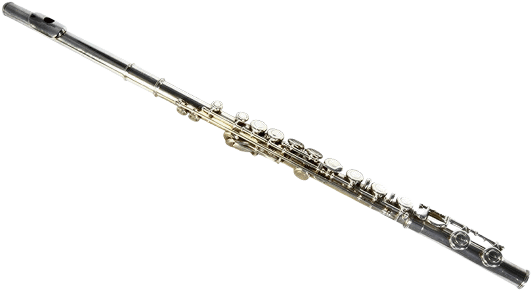Did you ever wonder how hockey sticks are made? Well you came to the right blog because I am going to tell you. Hockey sticks currently are made of different materials, each having its own characteristics. They also vary in shaft length, circumference, shape, flexibility, balance, kick point, and blade characteristics. Youth stick shafts are shorter and have a smaller circumference, and youth blades are shorter in length and height also. Wood Hockey Stick Construction:
Lumber is the least expensive but is usually slightly heavier. Wood hockey sticks offer a strong, natural feel with the puck. NHL players never used to break their sticks nearly as often when they all used wood sticks. This indicates that the trade off in strength is worth it for the performance of new composite ones.
Wooden hockey sticks are now usually made by laminating layers of wood together with thin plastic or fiberglass. The blade is then coated entirely in a layer of plastic or fiberglass to protect it. That keeps the water from seeping into the cracks to splinter the bottom of the blade, and makes them lighter than the original solid wood sticks. Still, wood is not as durable as aluminum or composite hockey sticks.
Composite Hockey Sticks: In September 2009, Sid Crosby was switching to one piece composite sticks. Composite sticks are today’s popular and more expensive option. They are lighter than wood, and players claim to have faster shots as a result. Stickhandlers cite improved puck control as the best feature.
Composite sticks can be composed of different materials like wood, fiberglass, aluminum, carbon fiber, titanium, or Kevlar. They can be made with the blade and the shaft in separate pieces or as a one piece hockey stick.
You’ll commonly find composite sticks to be (or close to)
- 20% graphite with 80% firberglass;
- 50% graphite with 50% fiberglass;
- 100% graphite.
To make a composite stick, a long sheet of the composite material is wrapped around a mold in the shape of the blade or shaft. Then it is compressed in a large machine until it takes on the proper shape.
Fiberglass Hockey Stick Construction: Fiberglass is made from extremely fine fibers of glass woven together into a sheet like cloth. Multiple sheets are bonded by resin for thickness and strength. This makes it heavy, and with its lack of density, fiberglass is also the weakest of composite hockey stick materials. These usually have a core, and it’s usually wood, but you will also find fiberglass in lower end graphite sticks. Fiberglass hockey sticks are the least expensive composite hockey sticks, so, considering their fragility, they’re best for a beginner or small player.
Graphite Hockey Stick Construction: First off, graphite and carbon are interchangeable terms. Carbon fiber is carbon based composite material, that is strong in tension but reasonably flexible, light, and expensive.
Graphite is a soft, gray or black form of crystalline carbon that is found in nature and is used for pencils although it contains no lead. Carbon fiber was discovered in petroleum pitch derived from oil processing, but now is mixed with other natural byproducts called polyacrylonitrile.
Carbon fibers are drawn into long strands or fibers and then heated to a very high temperature without any contact with oxygen so it won’t burn. This gets rid of everything but carbon. Then a bit of oxygen is added to the molecules so that epoxy, polyester, nylon, or urethane will adhere to it. Then the strands are woven into a cloth like sheet as the raw material for hockey stick manufacturers.
Graphite (carbon fiber) can be used to coat or reinforce wooden or fiberglass sticks, or be mixed with Kevlar or other material. The most expensive composite hockey sticks don’t have wood or fiberglass in them, they’re either 100% carbon, or mixed with Kevlar for more strength. Graphite is stronger than aluminum or fiberglass but also more expensive, though not as costly as aluminum or kevlar. They have the feel of a really light wood stick.
Aluminum Hockey Stick Construction: Some hockey sticks have a shaft made entirely out of aluminum, and need a replaceable wood or composite blade insert. Aluminum hockey sticks are stronger and lighter than wood or fiberglass, and don’t wear or warp like a wooden stick, but they are not up to Kevlar or graphite standards. On the other hand, they aren’t up to Kevlar or graphite prices either.
To make an aluminum hockey stick, aluminum sheets are folded repeatedly into a block shape. The aluminum block is then cut into pieces roughly the size of the finished shaft or blade and pressed into shape in a machine called an extruder. The metal is then heat-treated to give it strength.
Kevlar Hockey Sticks: While often used in tandem with graphite, Kevlar can also be used on its own to make a hockey stick. Kevlar sticks are expensive but are also strong and can be the lightest on the market.
Titanium Hockey Sticks: Similar to Kevlar, these are usually not combined with any other materials. Companies are combining titanium and carbon fiber in other products now though, like cars. Titanium is a stiffer material by nature, but titanium hockey sticks are offered in various flexes. Titanium hockey sticks often feature replaceable (carbon) blades that are replaceable. These are some of the strongest and lightest sticks that money can buy, but are very expensive. Now you know how to make hockey sticks. I hope you learned alot from this bye.

 Here is a flute in the box. You have to put it together.
Here is a flute in the box. You have to put it together. This is what a flute looks like when it is together. Hope you learned something.
This is what a flute looks like when it is together. Hope you learned something.
Who has been on my blog